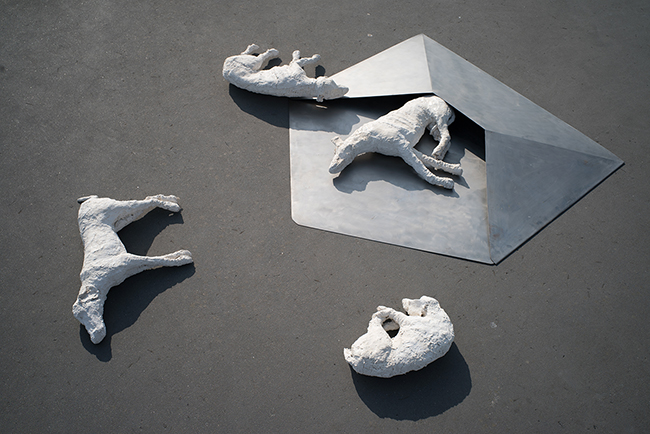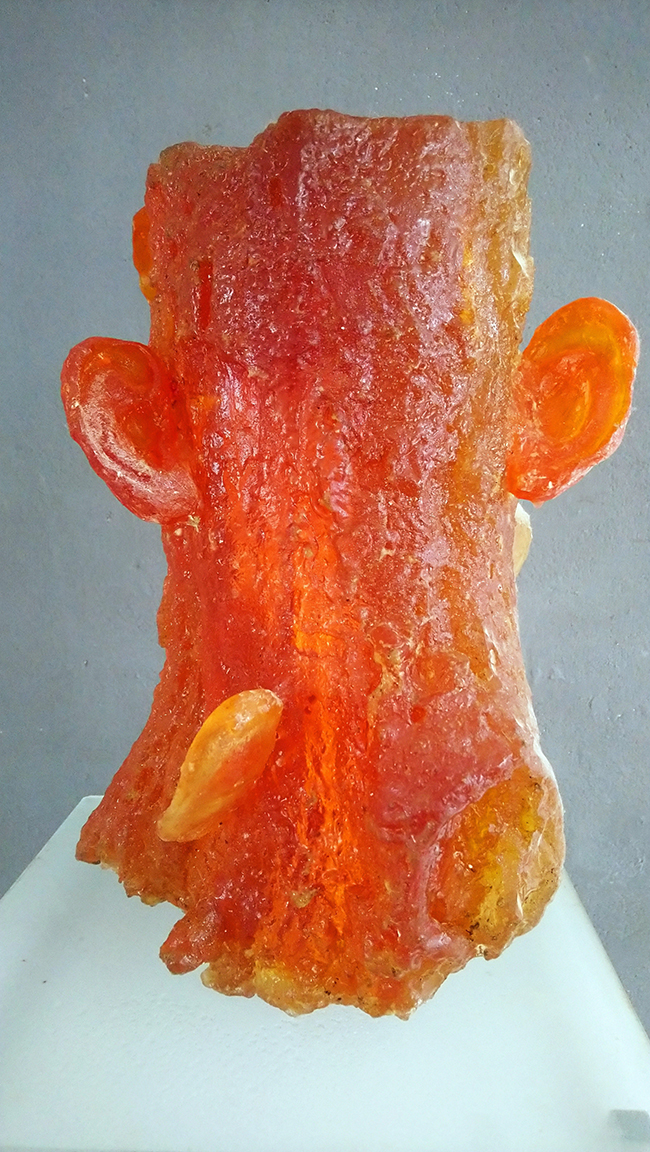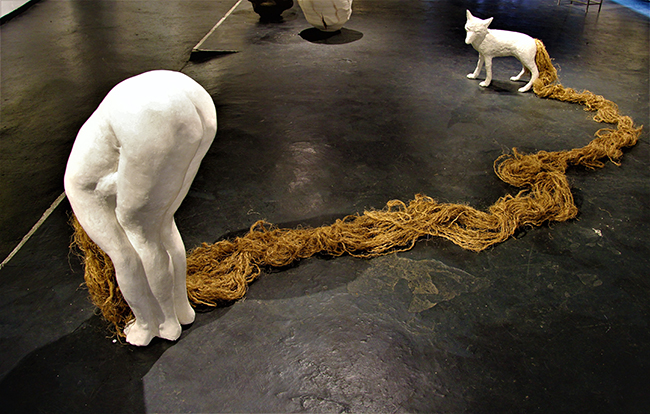Caroline Kampfraath is a Dutch artist known for her 3D art, a blend of different materials used to narrate her personal experiences and observations of the world around her. She integrates objects such as metal cans, bottles, and even human parts into her sculptures, each of which represents something deeper about our connection to nature, human emotions, and societal issues. Through her pieces, she connects the tangible and symbolic, offering a layered interpretation of human existence.

Kampfraath’s work, “The Tentacles of the River,” is a good example of her storytelling approach. In this sculpture, she uses human lungs and jellyfish to symbolize our connection to the natural world. The human lungs represent our breath, our life force, while the jellyfish illustrate the delicate and intricate relationships we have with nature. She also incorporates branches of trees and kite wires, creating layers of meaning that reflect how our thinking and emotions are tied to our surroundings. This piece is meant to evoke a sense of connectivity – not only between humans and nature but within ourselves as well. Despite its intricate and multifaceted elements, the artwork exudes a positive message of connection and hope.

Kampfraath’s artistic journey extends into works such as “Inescapable,” an installation composed of porcelain plaster and flax. In this piece, she explores the idea of being trapped within oneself, unable to fully access one’s talents. A fox, a symbol of shedding old habits and identities, features prominently in the piece, offering a sense of transformation and growth. The use of flax, a material traditionally associated with prosperity, adds an additional layer of meaning, symbolizing the potential for personal and artistic growth. The work reflects Kampfraath’s exploration of self, identity, and progress, and invites the viewer to consider their own inner struggles and transformations.
One of Kampfraath’s recurring themes is the complex and often troubled relationship between humans and nature. In her sculpture “It’s All Hearsay Said the Tree,” made from natural and artificial resin, she delves into this theme further. This piece is part of a series that started with an invitation from the European Cultural Centre for the Venice Biennale, where her first sculpture, “The Trees Weep Upon Us,” was showcased. “It’s All Hearsay Said the Tree” questions whether humans truly listen to nature or merely exploit it for their own needs. The tree, as a silent witness to human actions, represents the delicate balance between respect and exploitation. This piece, like many of her works, challenges viewers to consider their own relationship with nature and whether they are really hearing its messages or just ignoring them.

Kampfraath also tackles themes of modern communication in her sculpture “Dead Dogs Envelope.” Made from stainless steel and porcelain plaster, this artwork critiques the superficiality of contemporary digital interactions. The cold, unyielding nature of metal is used to symbolize the lack of emotion and depth in today’s instant communication, like emails and texts. The envelope, a traditional symbol of communication, here delivers “dead dogs,” representing lifeless, emotionless messages. Dogs, often seen as symbols of loyalty and comfort, are contrasted with the detached nature of digital interactions. In this work, Kampfraath prompts us to reflect on how technology has altered the way we connect with one another and whether we are losing the depth of human connection in the process.
Throughout her body of work, Kampfraath combines a range of materials to tell intricate stories that reflect personal, societal, and environmental issues. Her sculptures are more than just objects; they are a way for her to process and communicate her thoughts and emotions about the world. By combining everyday materials with symbols that carry deeper meaning, she invites viewers into a dialogue about the complexities of human existence and our place within the world.
Caroline Kampfraath’s work is not just about art; it’s about connection—whether it’s between humans and nature, the physical and the symbolic, or even the digital and the emotional. Each piece tells a story that is both deeply personal and universal, inviting the viewer to reflect on their own experiences and relationships. Through her sculptures, she seeks to bridge the gap between the tangible world and the internal, offering a profound commentary on life, progress, and our evolving connections with the world around us.

